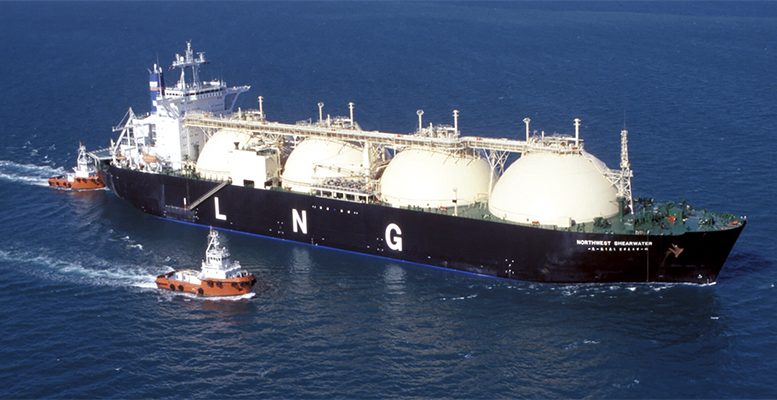Daniel Stemler | In recent years we have seen countless proposals for projects to deliver natural gas to Europe and ease the European Union’s dependence on Russian gas. Attempts to diversify the EU’s energy supplies have produced various plans for pipelines. But amid constant geopolitical tensions these projects have been developing quite slowly. Meanwhile, the LNG revolution has put another significant element on the table for European leaders.
One of the most discussed and, in many ways, the most controversial projects of recent years is undoubtedly the expansion of Nord Stream 2, which runs from Vyborg (Russia) to Greifswald (Germany), delivering Russian natural gas to the heart of the European Union. Nord Stream 2 would enable EU countries to import more natural gas, but it would not help diversify supplies. On the contrary, it would strengthen Russia’s position in its key market at a time when gas demand is expected to slow due to the rise in renewables. Moreover, now the Kremlin has realised that its dream of becoming China’s natural gas supplier won’t materialise, at least not in the foreseeable future, the Nord Stream 2 and the Turkish Stream have become even more important for Russia and its state-owned energy company Gazprom. China doesn’t really need Russian gas as it has many other options to meet its natural gas needs, including a vast number of LNG exporters. There is also a big gap in their price proposals. Therefore, it’s probably safe to say that Nord Stream 2 and Turkish Stream are the best bets for Russia in the long run. Some EU leaders are concerned about the lack of diversification with Nord Stream 2, but Russia’s desperate attempt to hold on to its position as the main gas supplier for Europe actually puts the EU in a great negotiating position. As a major gas market and a reliable client, it’s time for the Union to play hardball and dictate the terms of the deal with Russia.
Options on the horizon: Caspian region & East Med
The EU now has more options to diversify its gas supplies from other sources and decrease its dependence on the Kremlin. One of the prime target areas of the EU is the Caspian region. The idea is to bring Caspian gas from the Shah Deniz gas field, located some 70 km off the coast of Azerbaijan, via the Southern Gas Corridor (SGC) to South-eastern Europe. The SGC consists of 3 pipelines, namely the South Caucasus Pipeline, the Trans-Anatolian Pipeline (TANAP) and the Trans-Adriatic Pipeline (TAP). The pipelines are expected to go online in 2018 with Azerbaijan already contracted for the 10bcm initial phase. However, questions remain regarding phase 2 when TAP will be expanded with an additional 10bcm after 2020. “It could come from Azerbaijan, but there is some uncertainty about whether they are able to deliver. Turkmenistan is really a very long shot. In order for them to export anything, they need to build the Trans-Caspian Gas Pipeline, which Iran and Russia are consistently blocking.”, said Sijbren de Jong, strategic analyst at the Hague Centre for Strategic Studies. De Jong noted that the ongoing diplomatic dispute between the European Union and Turkey, a key transit country for the project, will not stand in the way of the SGC.
Nevertheless Gazprom could still cause disputes in the SGC project as the Russian giant eyes using the TAP in phase 2 to pump gas under the third party access (TPA) rule. That would mean, of course, that the TAP, which will be the EU’s first non-Russian gas pipeline since Algerian Medgaz, has failed to achieve its main target, diversification. “While the first phase of TAP’s capacity will be filled by the BP-led consortium developing Azerbaijan’s Shah Deniz II gasfield, TAP says any gas supplier can bid for another 10 bcm of capacity through so-called Open Season auctions,” writes the EURACTIVE. A possible option for the European Commission to keep Gazprom away from TAP is to introduce a TPA exemption for the company, as they did in the case of the Interconnector Turkey-Greece-Italy (ITGI).
At the same time, despite recent political tensions between Turkey and Russia, the European Commission is confident about the development of the SGC. “I think we will have Caspian gas before 2020,” said Maros Šefčovič, Vice-President of European Commission in charge of Energy Union.
Another possible new source is the East Mediterranean region, specifically the Aphrodite (Cyprus), the Leviathan (Israel) and the giant Zohr field (Egypt). The most significant is, without question, the Zohr field, discovered by Italian energy company Eni in 2015. At the time, Eni claimed the field potentially contains up to 30 trillion cubic feet of lean gas, which would make it the largest gas discovery in the Mediterranean Sea. Although the area certainly has great potential, some might say even a game-changing potential, it’s largely under-explored and it will take years to further explore and develop these fields. That said, according to Energy Aspects Ltd, a London-based independent consultancy, Eni will achieve a “significant level” of production at Zohr around 2018 or 2019. A big part of the gas from these fields will be consumed domestically, as in the case of Egypt. However, if further exploration in the area is successful, the East Med region has the potential to become a major LNG exporter for Europe in the next decade.
“In the longer term, and especially if Total/Eni are successful with drilling in Cyprus’ block 11 this summer, if the price is right FLNG/LNG may become serious options for gas exports to Europe and the Asian markets,” said Charles Ellinas, Nonresident Senior Fellow at the Eurasian Energy Futures Initiative.





